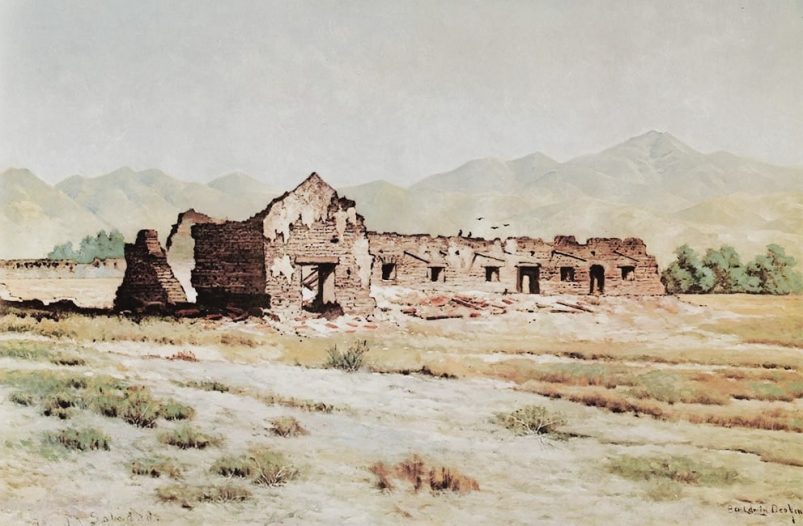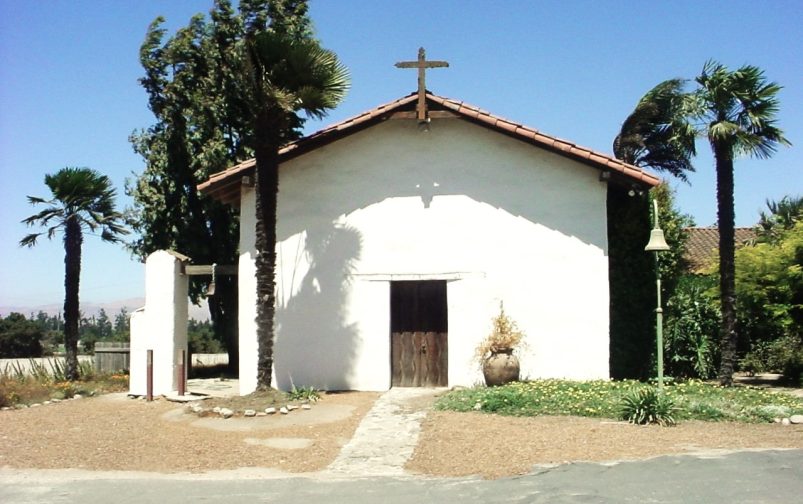When the Franciscans founded Mission Nuestra Señora de La Soledad on October 9, 1791, the “Golden Age” of the Spanish missions of California was beginning, and there was anticipation for another successful venture. Gaspar de Portolá, the first to discover the lonely spot, had named it Our Lady of Solitude. The loneliness, the stubborn soil, and the damp winter winds, all contributed to disappointment rather than joyfulness for the resident Padres.
The royal gifts that supposedly would equip La Soledad Mission never arrived. The adobe buildings tended to disintegrate in summers that were too dry and in winters too wet. The neophyte population was never large, and an epidemic in 1802 caused the death of many Indians and the loss of many others who fled.
The last Franciscan at Mission Soledad was Father Vicente Francisco de Sarría. Alone, He struggled to keep the buildings habitable and minister to the few remaining devoted Indians. One morning in 1835, he was found dead at the foot of the altar. The little band of loyal Indian followers carried his remains over the hills to Mission San Antonio. Soledad Mission died that day, too. The Mexican Governor Pio Pico received $800 for what was left. Although the site of the mission buildings was eventually returned to the Catholic Church by the United States, nothing remained but stubs of adobe walls. The lonely place was not re-occupied.

In recent years, when restoration began at Nuestra Señora de la Soledad Mission, the floor of the mission church was found intact under layers of silt from flood waters. The floor is still there, preserved under the same silt. A storeroom had been used as a chapel for the tiny congregation after the loss of the church.
In its beautiful but lonely location many miles from any town, Mission Soledad, more than any others, looks just as it did in early Spanish times. Entirely of adobe construction, the Soledad Mission fell completely into ruin after its forced abandonment.
Recent rebuilding projects have recreated one side of the quadrangle and the old chapel. The location of the original church, which washed away in a flood, has been found with the tile floor intact. Now, the rebuilt rooms house a catching Museum. The stubs of adobe walls still mark the exact locations of the remainder of the old quadrangle. Today, an irrigation water system and loving care have turned the area into a beautiful garden.
